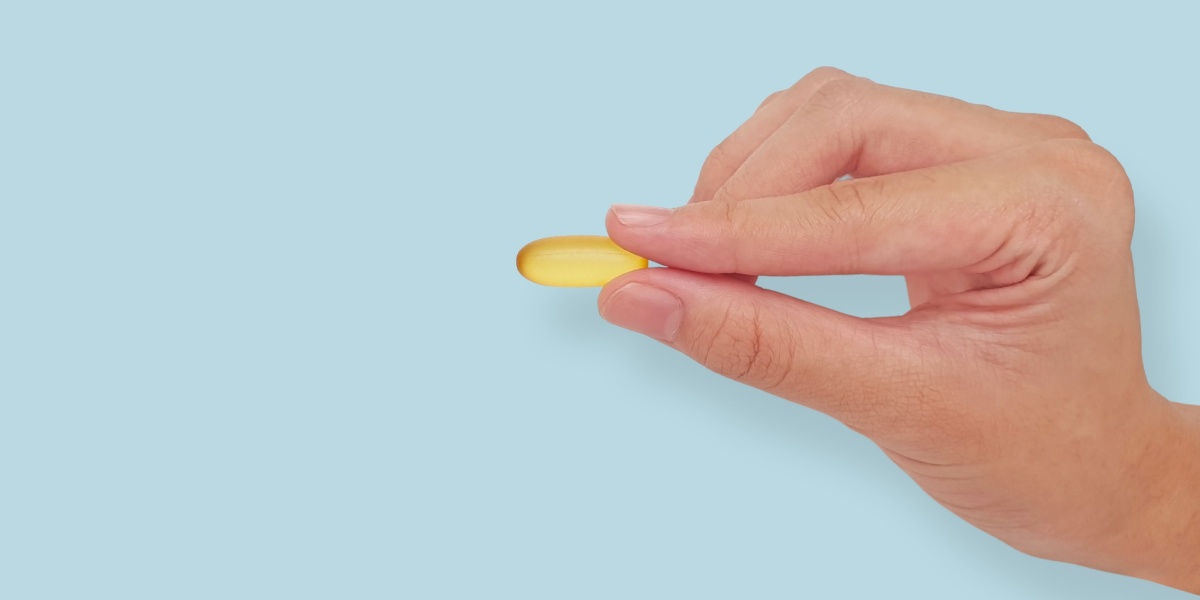Using Amphetamines for ADHD Treatment
Some people with attention deficit hyperactivity disorder (ADHD) are prescribed stimulants, such as amphetamines, to help manage symptoms. The stimulants boost the concentration of particular neurotransmitters, including dopamine and norepinephrine, which increase attention and impulse control. Monitoring, however, is crucial as amphetamine effects can vary depending on the individual’s condition.

What Are Amphetamines?
Amphetamines are a group of stimulant drugs that affect the central nervous system. They increase the activity of certain neurotransmitters in the brain, particularly dopamine and norepinephrine, which control an individual’s attention, mood, and behavior. [1]
Amphetamines help reduce impulsivity, improve attention, and control hyperactivity for individuals with ADHD, enhancing the nerve cell structures that control attention and behavior. Adderall, Dexedrine, and Vyvanse are a few examples.
So, how do amphetamines help ADHD? Their mechanism of action is to stimulate the release and inhibition of the reuptake of these neurotransmitters, resulting in higher concentrations in areas of the brain that regulate attention, focus, and impulse control. By boosting dopamine and norepinephrine, amphetamines support cognitive functions and emotional regulation, making them a cornerstone of ADHD treatment.
How Effective are Amphetamines for ADHD Treatment?
Amphetamines are very effective for treating ADHD symptoms, with studies showing 70% of adults and 70-80% of children with ADHD show significant improvement when treated with stimulant medications. [2]
Amphetamines are one of the two main classes of stimulant medications used to treat ADHD. The other is methylphenidate (e.g., Ritalin, Concerta). Both are effective but work slightly differently. Amphetamines produce a more sustained and substantial effect by increasing dopamine and norepinephrine levels. Methylphenidate also works but inhibits the reuptake of dopamine and norepinephrine rather than increasing release, which can result in a different therapeutic profile.
Both classes of medications have similar efficacy, but responses can vary from person to person. Some may respond better to amphetamines, while others may find methylphenidate medications more effective or better tolerated. Amphetamines tend to have a longer duration of action, which can be beneficial for those who need all-day symptom control.
Patients who do not respond well to stimulants or experience intolerable side effects may use non-stimulant medications like atomoxetine (Strattera) or guanfacine (Intuniv) as alternatives. Atomoxetine works by selectively inhibiting the reuptake of norepinephrine and is often considered for patients with co-occurring anxiety or those preferring a non-stimulant approach.
Guanfacine is primarily used to treat ADHD, particularly in children and adolescents. It stimulates alpha-2 adrenergic receptors in the brain, improving attention regulation, impulse control, and hyperactivity. While they are effective, non-stimulants generally show less robust symptom improvement than stimulants.
Side Effects of Amphetamines
Amphetamines can cause a variety of side effects, including effects on the nervous, cardiovascular, and gastrointestinal systems. It may also cause psychological and behavioral effects. [3] These may vary depending on the dosage, frequency of use, and sensitivity to the drug.
Cardiovascular Effects
- Tachycardia: Amphetamines release norepinephrine, a neurotransmitter that makes the heart beat faster. This is a normal stimulant effect, but for some people, especially those with underlying heart conditions, it can be dangerous.
- Palpitations: These medications can cause palpitations (racing, pounding, or irregular heartbeat) by stimulating the sympathetic nervous and cardiovascular systems. If they happen suddenly, they can be uncomfortable and frightening.
- High blood pressure: Stimulants for ADHD constrict blood vessels and increase heart output, which can increase blood pressure. This can lead to long-term heart problems or exacerbate existing hypertension (high blood pressure).
Nervous System Effects
- Insomnia: Amphetamines can make you feel awake and disrupt sleep. People who take them, especially in the afternoon or evening, may have trouble falling or staying asleep.
- Anxiety or nervousness: Stimulants increase dopamine and norepinephrine in the brain, making you more alert. While this can be good (treating ADHD), it can also cause anxiety, nervousness, or excessive worrying.
- Tremors or shakiness: Some people experience physical shaking or trembling, especially if they are sensitive to stimulants. This can signify the body is reacting strongly to the drug’s stimulating effects.
Gastrointestinal Effects
- Loss of appetite: ADHD stimulants suppress appetite by affecting the release of dopamine and norepinephrine, which are neurotransmitters that regulate hunger.
- Nausea or vomiting: Amphetamines’ stimulating effects can upset the digestive system and cause nausea or vomiting in some people
Psychological and Behavioral Effects
- Mood swings: ADHD stimulant medication can cause mood swings. Some people may feel euphoric or hyper, while others may feel irritable, angry, or even depressed, especially as the drug wears off.
- Paranoia or agitation: At higher doses, amphetamines can cause feelings of suspicion and agitation, progressing to full-blown paranoia in extreme cases.
Dosage and Administration
The dosage and administration may vary depending on the drug’s formulation and individual factors. There are short-acting and long-acting formulations. Short-acting amphetamines are immediate-release (IR) formulations that start to work quickly after ingestion and have a relatively short duration of action. Examples are Adderall and Dexedrine.
These formulations are taken multiple times throughout the day (e.g., every 4–6 hours), especially if you need sustained symptom control. For example, you may take one in the morning, another after lunch, and a third in the early afternoon.
Long-acting amphetamines release the medication slowly over a long period, usually all day. Examples are Adderall XR (extended-release) and Vyvanse (lisdexamfetamine). Long-acting formulations only need one dose a day, usually in the morning. Depending on the formulation, they last 10-12 hours (sometimes up to 14 hours). This suits people who need continuous symptom control throughout their work or school day.
It’s essential to follow the dosing schedule. Taking amphetamines as prescribed can reduce the risk of side effects such as anxiety, insomnia, increased heart rate, or misuse. Following your prescription also means the medication will work to control your symptoms. Also, following the schedule regularly will minimize the risk of tolerance (where you need more to get the same effect) or physical dependence.
What to Consider Before Starting Amphetamine Treatment
From medical history to medication interactions, there are a few things that should be considered before starting amphetamine treatment.
Health History and Co-Existing Conditions
When getting prescribed amphetamines, a doctor will get a full medical history to assess potential risks and side effects that can be exacerbated in certain conditions. Prescribers will look for any pre-existing cardiovascular conditions such as tachycardia, hypertension, or heart defects. [1] They will also assess the patient’s mental health history, as amphetamines can worsen anxiety disorder, bipolar disorder, psychosis, and substance use disorders.
Medication Interactions
Amphetamines can interact with other medications, either increasing or decreasing their effects. Important interactions to consider include:
- Antidepressants (especially monoamine oxidase inhibitors (MAOIs), which can increase the risk of serotonin syndrome.
- Other stimulants or medications that affect the central nervous system (e.g., SSRI antidepressants, anti-anxiety medications).
- Blood pressure medications (e.g., beta-blockers) can interact with medications for high blood pressure, so the patient’s blood pressure should be monitored.
- Acidifying or alkalizing agents that change the pH of the urine (e.g., antacids, vitamin C, or cranberry juice) can affect the metabolism and excretion of amphetamines.
Potential for Abuse
Amphetamines are Schedule II controlled substances, which means they have a high potential for abuse and can cause psychological or physical dependence. Providers need to assess the patient’s history of drug misuse or addiction and consider the risk of diversion (sharing or selling the medication).
Monitoring and Follow-Up
Once amphetamines are prescribed, follow-up is necessary to check the medication’s effectiveness and for side effects or adverse reactions. The initial dose will likely need to be adjusted based on the patient’s response and tolerance. Follow-ups every 3-6 months will help determine if the dose needs to be changed.
Alternative ADHD Medication
Non-stimulant ADHD medication is used when stimulants don’t work, cause too many side effects, or are at risk of being abused or misused. These meds are also used when patients have coexisting conditions, making stimulant use problematic (e.g., anxiety or substance use disorders).
Atomoxetine (Strattera)
Atomoxetine is a norepinephrine reuptake inhibitor that increases norepinephrine in the brain, helping with attention and impulse control. It is taken once or twice daily and takes 1-2 weeks to kick in. It can take up to 6 weeks to reach full therapeutic effect, so it’s a slower-acting alternative to stimulants.
Atomoxetine is an alternative if stimulants don’t work or cause too many side effects. It’s particularly useful for people with anxiety disorders, tics, or a history of substance use as it has a lower risk of abuse and doesn’t negatively impact these conditions like stimulants.
Guanfacine (Intuniv)
Guanfacine stimulates specific brain receptors that help with attention and reduce hyperactivity and impulse control. It’s more commonly used in children and is taken once a day in the evening, as it can cause drowsiness. Guanfacine can help with impulsivity and aggressive behavior in children with ADHD who also have emotional dysregulation. It can be an alternative for those who have coexisting tics or anxiety, which stimulants would make worse.
Clonidine (Kapvay)
Clonidine affects specific brain receptors. It can help with hyperactivity and impulse control but is less effective for attention or cognitive symptoms. It’s an alternative to amphetamines for patients with sleep problems.
- Martin D., Jacqueline K. (2023 July 31) Amphetamine. https://www.ncbi.nlm.nih.gov/books/NBK556103/
- Advokat C., Scheithauer M. (2013 May 29) Attention-Deficit Hyperactivity Disorder (ADHD) Stimulant Medications as Cognitive Enhancers. https://pmc.ncbi.nlm.nih.gov/articles/PMC3666055/
- Berman S. M., Kuczenski R., McCracken J. T., London E. T. (2008 August 12) Potential Adverse Effects of Amphetamine Treatment on Brain and Behavior: A Review. https://pmc.ncbi.nlm.nih.gov/articles/PMC2670101/
The Clinical Affairs Team at MentalHealth.com is a dedicated group of medical professionals with diverse and extensive clinical experience. They actively contribute to the development of content, products, and services, and meticulously review all medical material before publication to ensure accuracy and alignment with current research and conversations in mental health. For more information, please visit the Editorial Policy.
MentalHealth.com is a health technology company guiding people towards self-understanding and connection. The platform provides reliable resources, accessible services, and nurturing communities. Its purpose is to educate, support, and empower people in their pursuit of well-being.
Dr. Mark Dombeck is a trauma-informed psychologist with over 20 years of clinical experience. He specializes in adult neurodiversity, couples therapy, and trauma and dissociation.
Morgan Blair is a licensed therapist, writer and medical reviewer, holding a master’s degree in clinical mental health counseling from Northwestern University.
Further Reading
The Clinical Affairs Team at MentalHealth.com is a dedicated group of medical professionals with diverse and extensive clinical experience. They actively contribute to the development of content, products, and services, and meticulously review all medical material before publication to ensure accuracy and alignment with current research and conversations in mental health. For more information, please visit the Editorial Policy.
MentalHealth.com is a health technology company guiding people towards self-understanding and connection. The platform provides reliable resources, accessible services, and nurturing communities. Its purpose is to educate, support, and empower people in their pursuit of well-being.


